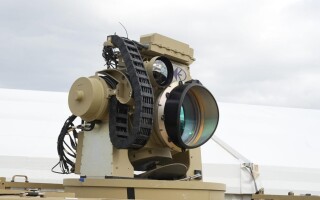How AI can help in battlefield healthcare
BlogJune 11, 2019
Rescuing wounded soldiers during active battlefield situations is one of the most dangerous positions and the cause of many military deaths. According to researchers, around 86% of battlefield deaths occur during the first thirty minutes post-injury. This is the reason researchers across the world are working toward developing artificial intelligence (AI) technology that can bolster battlefield healthcare.
Artificial intelligence (AI) can reduce serious injury and death on the field of battle. Most of the development is occurring in the application of robotic systems and unmanned ground vehicles (UGVs) to implement and provide aid in on-site surgery; look for and perform casualty extraction; and conduct intelligence, surveillance, and reconnaissance (ISR) activities.
Battlefield robotic surgical systems
Remote surgical systems – while still in the developing phase – could change the whole scenario of battlefield healthcare. Many private companies, as well as the U.S. military, are already investing resources that will ensure that semiautonomous technologies will be able to provide different health care options for locations that have none. With on-site robotic surgical systems, healthcare personnel can perform “remote” or “unmanned” surgery; even though currently there still must be a human doctor to oversee a robot-performed procedure, the systems can be helpful in places where highly skilled medical resources and doctors are not available to perform complex surgeries, such as on the battlefield and in isolated enclaves.
UGVs and platforms in the battlefield
UGVs and unmanned platforms can perform many tasks, from rescuing the injured to serving as an armed line of force. Some unmanned systems operate as either quadruped or biped classic-style “robots.” The role of UGVs can also be changed according to the situation on the battlefield, including for dangerous missions where it is hazardous to send a human operator, for instance defusing a bomb or checking on mines. UGVs can also be operated entirely autonomously or can be sent into an otherwise unreachable location.
Battlefield casualty-extraction robots
Battlefield casualty-extraction robots – designed especially for retrieval of injured soldiers – can wend through rough or uneven terrain while carrying the weight of a human. Metal-bodied remote-control UGVs currently have a top speed of 10 km per hour (6.2 miles per hour) and can easily lift weights up to 227 kg (500 pounds).
“Porter” UGVs and RGPs
Soldiers who must carry loads on and off the battlefield have some of the most dangerous tasks, as often they are encumbererd and may not be able to defend themselves. AI seeks to change this scenario by determining how and where to deploy UGVs and robotic ground platforms (RGPs) to carry heavy loads over long distances and rough terrain. Such platforms can also guard soldiers – by conducting surveillance and gathering intelligence – on both operational and logistical missions. Some of these platforms have already been developed and can work up to 72 hours without refueling.
AI is changing the face of the modern battlefield: AI is and will continue to be used not only for offensive measures, but also is playing a significant role in defensive measures, including saving lives on the front line.
Nichole Heydenburg is content manager for Apex Waves (Cary, North Carolina).






